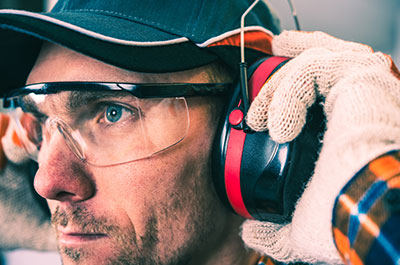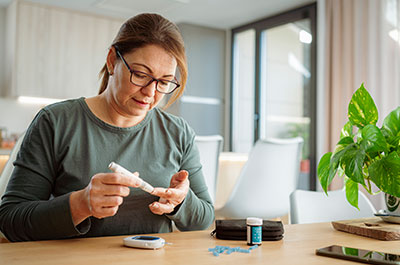According to the American Cancer Society, Black women have the highest breast cancer mortality rate of any U.S. racial or ethnic group. And in people younger than 45 years old, breast cancer is more common in Black women than white women.
“This is a complex topic that’s been reviewed over the last couple of decades,” says Anna Lehrberg, D.O., a breast cancer surgeon with Henry Ford Health. “Although there have been a lot of improvements in treatments, there’s still a mortality gap between Black and white women. It’s likely that there are several factors contributing to this, from biology to socioeconomic, lifestyle and environmental factors.”
Here, Dr. Lehrberg explains the factors that may contribute to a higher mortality rate of breast cancer in Black women.
1. Genetics.
Studies show that those with African ancestry are more likely to have a more aggressive type of tumor, along with a type of breast cancer that’s not as common and more resistant to treatment, such as triple-negative breast cancer, due to lack of targeted therapy.
“Additionally, those Black women with triple-negative breast cancer have higher rates of carrying a BRCA1 gene mutation—35% compared to 15% in white women—which is passed down from parents,” says Dr. Lehrberg. “Having the BRCA1 mutation increases your risk for breast cancer significantly. If you live to be 80 years old and carry the BRCA1 mutation, your chance of getting breast cancer is up to 70%. That is incredibly high compared to the average 12% lifetime risk of breast cancer.”
2. Environment.
Certain chemicals in beauty products have been rumored to be linked with cancer, and a recent study showed this just might be true—especially for Black women. Of this study, the American Cancer Society writes: “Among Black women, using permanent hair dyes was associated with a 45% increased risk of breast cancer, compared with a 7% increased risk for white women….this may be because hair products marketed to Black women contain different chemicals than those marketed to white women.” In the study, chemical hair straighteners also led to a higher risk of breast cancer, and Black women used straighteners more often than white women.
3. Lifestyle.
“There are several factors we know that can increase your risk for breast cancer,” says Dr. Lehrberg. “No matter your race or ethnicity, obesity can increase your risk for breast cancer, because peripheral fat promotes estrogen production, and an increase in estrogen can increase your breast cancer risk.” Smoking and drinking alcohol can also increase your breast cancer risk. By maintaining a healthy weight, eating a balanced diet, and avoiding smoking and alcohol, you can decrease your overall risk for breast cancer.
4. Access to care.
Oftentimes, when Black women have breast cancer, they’re diagnosed at a later stage. “This shows that they’re not getting screenings or follow-up treatment, and so there’s a lack of access to care,” says Dr. Lehrberg. “This is really important to overcome, especially in the younger Black population, because they do have more aggressive cancers that show up at a younger age. The earlier we catch cancer, the more likely it is that it can be successfully treated.”
What You Can Do To Stay Vigilant
“The most important thing you can do is to get screened regularly,” says Dr. Lehrberg. “If you’re at an average risk of breast cancer, you should start getting mammograms at age 40 and have a clinical breast exam. Risk is evaluated based on your breast history, lifetime hormone exposure, and family history of cancers (not only breast but ovarian, prostate, pancreas, and thyroid cancers). If you are at increased risk, you might be a candidate to start risk surveillance younger than age 40.
If you are at high risk for developing breast cancer, you should get genetic testing, which can identify cancer-causing gene mutations, such as the BRCA 1 mutation. Genetic testing can also guide future cancer treatment, as certain treatments can be tailored to someone’s genes.
“You can also be part of our high-surveillance clinic,” says Dr. Lehrberg. “These are high-risk patients we see twice a year for more aggressive screenings, such as an ultrasound, mammogram and sometimes a screening MRI. If you’re not sure of your risk level, start by bringing your family history to your doctor. This conversation is so important—it could be life-saving.”
To learn more about your own risk factors, take our Breast Cancer Risk Assessment quiz at henryford.com/breastcancerrisk.
To make an appointment with a cancer specialist, visit henryford.com/cancer or call 1-888-777-4167.
Dr. Anna Lehrberg is a breast cancer surgeon with Henry Ford Health. She sees patients at Henry Ford Medical Center – Fairlane and Henry Ford Wyandotte Hospital.



